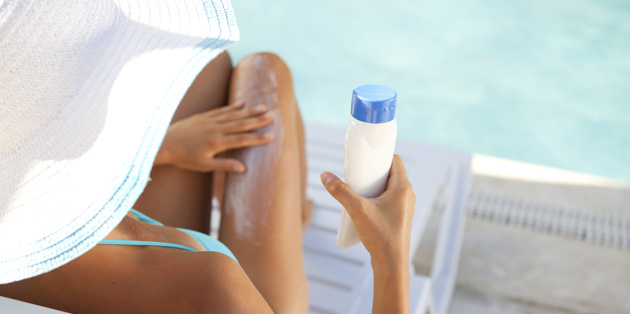Nanoparticles
Heard about this terminology but note sure what it means for your skin’s health?
 Nanoparticles are tiny particles with a diameter below 100 nanometres (one thousand millionth of a meter). Many modern sunscreens (and cosmetics) contain insoluble nanoparticles of Titanium Dioxide or Zinc Oxide, which are colourless and reflect/scatter ultraviolet radiation more efficiently than larger particles. The transparency of these nanoparticles makes them more cosmetically acceptable.
Nanoparticles are tiny particles with a diameter below 100 nanometres (one thousand millionth of a meter). Many modern sunscreens (and cosmetics) contain insoluble nanoparticles of Titanium Dioxide or Zinc Oxide, which are colourless and reflect/scatter ultraviolet radiation more efficiently than larger particles. The transparency of these nanoparticles makes them more cosmetically acceptable.
The barrier function of skin.
Human skin is structured in several layers: the stratum corneum (SC) (being the outermost 'non-living' layer), epidermis, dermis and the subcutaneous (deepest) layer. For most substances the SC is the main barrier against absorption and penetration of topically applied substances. In some patients, this barrier can potentially be compromised eg. patients with skin rashes, sunburn, following laser etc. If substances can penetrate into the 'living' skin layers (below the SC), they may be taken up by cells. Cells that take up small insoluble particles will release reactive oxygen species (free radicals) and enzymes to try and destroy or degrade them. When these particles cannot be degraded, they may accumulate in the cell potentially resulting in cell damage, alteration of cell function and inflammation. Scientists have expressed concern that if nanoparticles used in cosmetics or sunscreens are absorbed into living cells, they could damage cells and possibly increase the risk of skin cancers.What is the evidence?
- Most studies suggest that nanonised particles of Titanium Dioxide or Zinc Oxide remain on the skin surface (ie. on the outer layer of the SC) and do not penetrate healthy living skin
- One study on metal nanoparticles showed that those smaller than 10 nm could penetrate the skin and hair follicles, occasionally reaching the epidermis. However, most particles in sunscreen products are an average of 30 nm, with virtually no particles smaller than 19 nm
- Some test tube studies have shown that nanoparticles of Silica (which may be found in anti-ageing applications that smooth out wrinkles), Titanium Dioxide and Zinc Oxide can damage DNA (the genetic material in cells) especially when exposed to ultraviolet (UV) light
- One study found isotope-labelled Zinc from nanonised sunscreens applied to healthy skin was detectable in the blood and urine of human volunteers
